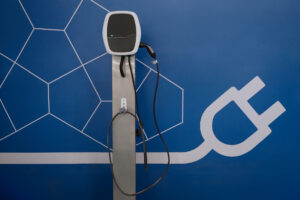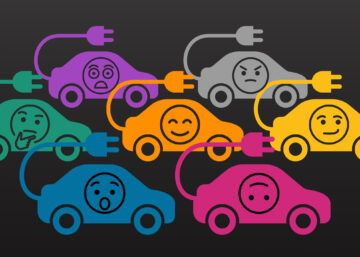Marketing
Marketing bi-directional charging
 Every year, Earth Day reminds us that the planet we live on is worth protecting. Many companies are taking up greener initiatives and developing technologies that will protect the planet. A key focus is transportation, including electric vehicles (EVs) and how we charge them. The development of bi-directional charging for EVs provides an opportunity to reduce carbon emissions and save consumer dollars as well. The question is, how are companies marketing it?
Every year, Earth Day reminds us that the planet we live on is worth protecting. Many companies are taking up greener initiatives and developing technologies that will protect the planet. A key focus is transportation, including electric vehicles (EVs) and how we charge them. The development of bi-directional charging for EVs provides an opportunity to reduce carbon emissions and save consumer dollars as well. The question is, how are companies marketing it?
For background, let’s look at the electrical grid. As energy demand continues to increase, the grid needs to become more efficient. This has led to the rise of the smart grid, which is composed of numerous microgrids and other units that can communicate with each other. Together, they create an energy grid that is both sustainable and much more efficient. One component of the smart grid is that it enables bi-directional charging. When an EV is plugged in, the smart grid can draw energy from the batteries and use it to power other parts of the grid. The technology can fill the gaps to meet energy demand and limit blackouts. It also helps to greatly reduce the EV user’s electric bill.
Wallbox, who makes EV chargers, recently released its Quasar 2 charging station. Enric Asunción, co-founder and CEO of Wallbox, says: “Quasar 2 represents a breakthrough in the evolution of home energy management. Not only does it allow us to rethink the way we produce, store and use energy on a day-to-day basis, but gives users the added power and comfort of being able to power their homes for over three days during a power outage.” A recent ad for Quasar 2 touts its user-centric design, such as how small and quiet it is, and its ability to charge one’s home in a blackout. The GM of Wallbox North America states: “We knew the technology would reimagine what EV charging could do, and with Quasar 2, we’re taking it to the next level.”
One of the main ways Wallbox is positioning its bi-directional chargers is the promise that you can potentially make money from your EV. According to an article written by Wallbox, “Any energy collected and stored in your EV’s battery can be sold back to the grid; whether it originates from your own energy source, such as solar panels on your roof, from renewable load following, from your home’s power source, or from your local supermarket charger…Initial studies on the potential income an EV could bring its owner through V2G estimate figures of around €400 ($497) a year.” In other words, the money you earn from selling your excess energy to the grid will not only help cover the costs of your EV and charger, it also creates an incentive to invest in self-reliant forms of renewable energy like solar panels. When more energy is created at home, more energy can be sold back to the grid in an environmentally friendly way.
Ford’s marketing for its bidirectional charger is pretty similar. The Ford Charge Station Pro pairs with its Ford F-150 Lightning electric truck. According to the sales page, “It gives. It takes. It works with you, then for you.” This wall charger also pairs directly with the back-up power system called Sunrun Home Integration System, and all of it can be viewed from Ford’s app. Ford’s partnership with Sunrun also allows consumers to utilize Sunrun’s solar panel arrays to make the most of their bidirectional charging abilities.
Siemens, a leader in the electrification industry, and a collaborator on the creation of the Ford Charge Station Pro, is hopeful about the implementation of this new form of technology. “The biggest topic currently in the eMobility space is bi-directional charging,” says Stefan Perras, Head of Pre-development and Innovation for eMobility Charging at Siemens. “Depending on the country,” he continues, “there are several giga- and terawatt hours of battery storage sitting in front of garages.”
An individual electric vehicle with a bidirectional charger doesn’t make that big of an impact on the grid. But an entire neighborhood or city of private, commercial and public vehicles feeding their excess energy back into the grid could make all the difference. “Batteries are a very good generation tool to stabilize the grid,” Perras says. “Within a few seconds, you can have the full capacity ready. There’s no startup time like for a power plant turbine.” This is the potential of EVs – a fleet of mobile, piecemeal generators that not only get you where you need to go, but also keep the lights on at your house, your job, and beyond.
Overall, bi-directional chargers can make your EV even more valuable, allowing you to make extra cash back on your energy bill while doing something good for the environment. Investing in one is a great way to celebrate Earth Day.

